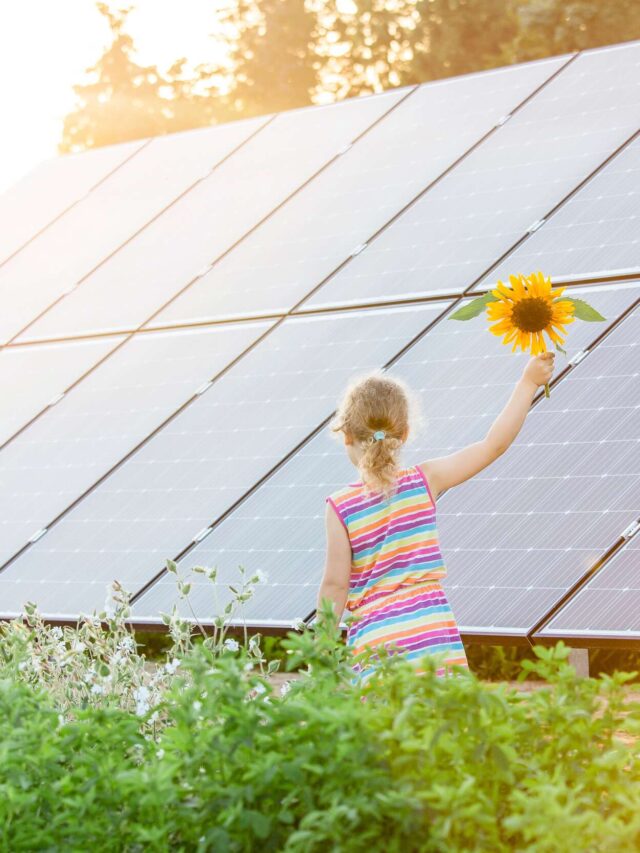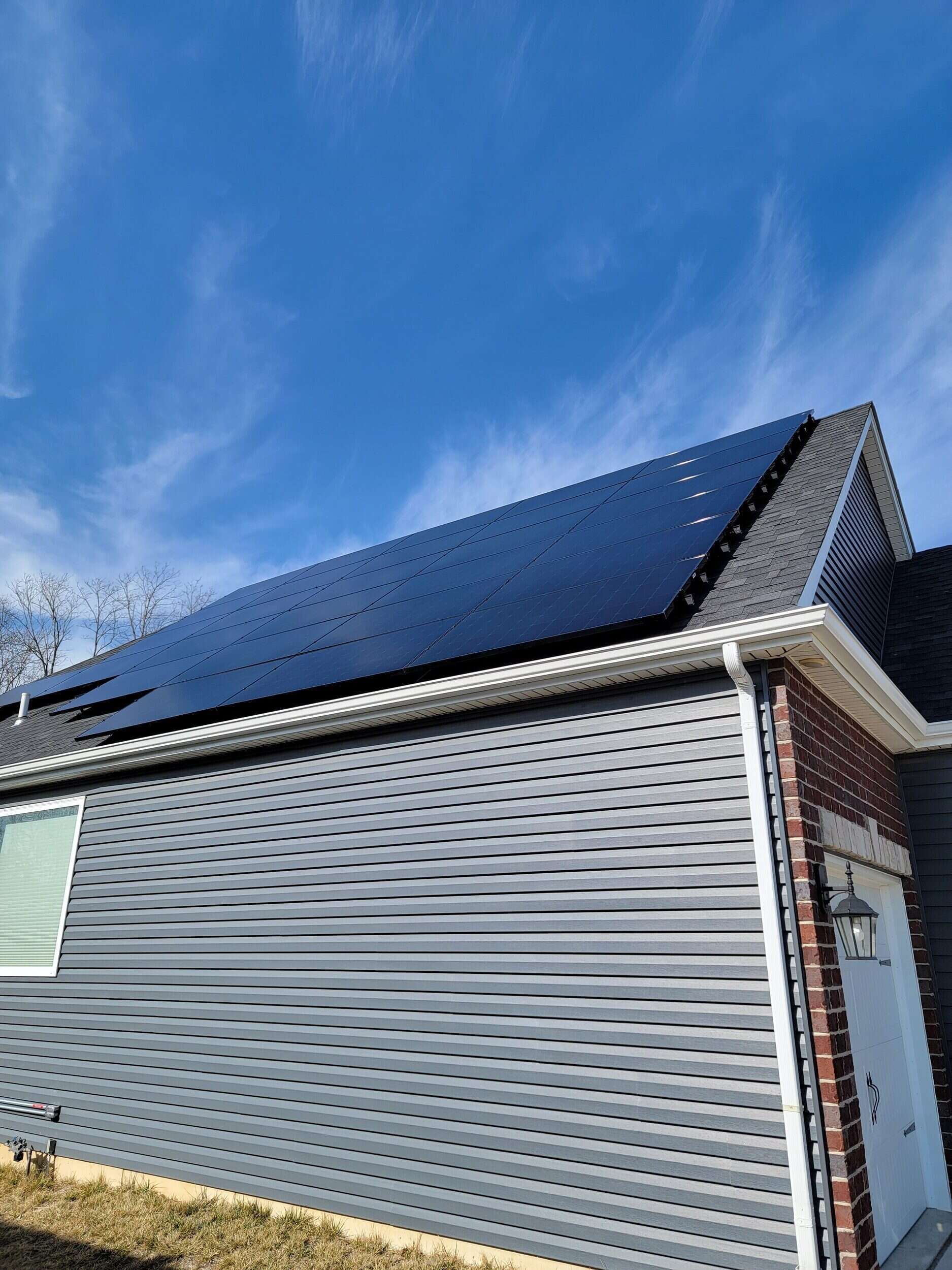Unlocking the Benefits of Direct Pay for Clean Energy Projects
Clean energy technologies are experiencing a surge in popularity, thanks to the Inflation Reduction Act, which introduces and expands tax credits for renewable energy initiatives. This landmark legislation presents an unprecedented opportunity for entities to invest in, manufacture, install, and produce clean energy. One of the most significant provisions within the act is “Direct Pay,” also known as “Elective Pay.” In this blog post, we will explore the benefits of Direct Pay and how it enables tax-exempt and governmental entities to actively contribute to building the clean energy economy.
What is Direct Pay?
Direct Pay, as introduced by the Inflation Reduction Act, allows tax-exempt and governmental entities to receive a payment equal to the full value of tax credits for qualifying clean energy projects. Unlike traditional grant and loan programs, Direct Pay ensures that eligible entities receive their payment if they meet the requirements for both Direct Pay and the underlying tax credit. This provision provides unparalleled policy certainty, enabling entities to undertake ambitious clean energy initiatives.
Eligibility and Benefits:
- State, Local, and Territorial Governments:
– Eligible entities include states, U.S. territories, political subdivisions, agencies, and instrumentalities of state or local governments.
– Direct Pay enables local governments to invest in clean energy, accelerating the adoption of sustainable practices.
– Funding opportunities are available for projects such as solar, wind, battery storage, community solar, EV charging infrastructure, and purchasing clean vehicles for state fleets. - Tribal and Native Entities:
– Federally recognized Tribal governments, their subdivisions, and agencies, as well as Alaska Native Corporations, are eligible for Direct Pay.
– Direct Pay empowers Tribes to bring clean energy to their communities and enhance energy sovereignty and independence.
– Qualifying projects include solar arrays, which can receive the Investment Tax Credit and additional credits through the Low-Income Communities Bonus Credit program. - Rural Energy Cooperatives:
– Direct Pay is available to any corporation operating on a cooperative basis that provides electricity to rural communities.
– Rural electric co-ops can leverage Direct Pay to invest in clean energy projects, create jobs, and continue delivering affordable, reliable electricity.
– Geothermal wells, for example, can benefit from the Production Tax Credit and Energy Communities Bonus Tax Credit. - Other Tax-Exempt Entities:
– Eligible entities include 501(c)(3) organizations, religious or apostolic organizations, and all other organizations exempt under section 501(a) of the tax code. organizations such as public charities, private foundations, schools, hospitals, houses of worship, and others
– Direct Pay helps nonprofits install clean energy systems, reduce energy costs, and allocate more resources towards their mission.
– Nonprofits can also generate clean electricity for their communities through technologies like community solar.
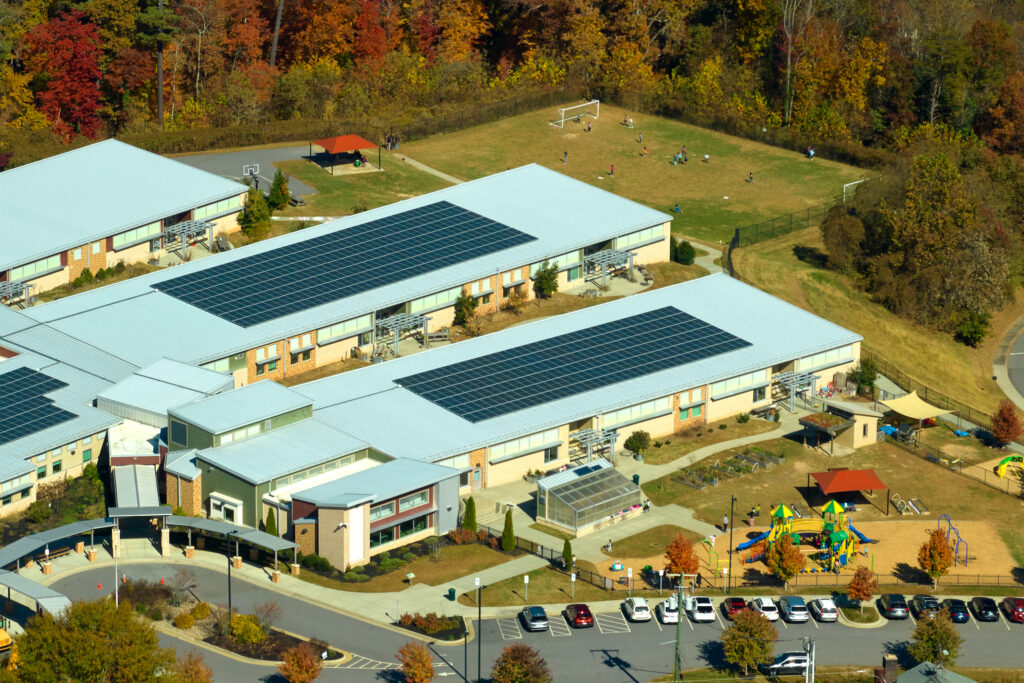
Application Process:
To take advantage of Direct Pay, entities need to follow a simple application process:
- Identify the project and the applicable tax credit.
- Complete the project and determine the corresponding tax year.
- Determine the tax return due date and complete pre-filing registration with the IRS.
- File your tax return, including the registration number and necessary documentation.
- Receive your direct payment once your return has been processed.
The Inflation Reduction Act’s Direct Pay provision is a game-changer for clean energy initiatives. By enabling tax-exempt and governmental entities to receive the full value of tax credits, it provides the policy certainty and financial support needed to accelerate the transition to a clean energy economy. State, local, and territorial governments, Tribal and Native entities, rural energy cooperatives, and other tax-exempt entities now have the opportunity to invest in renewable energy projects, reduce costs, and promote environmental justice.
Are you interested in leveraging the Direct Pay provision for your clean energy project? Visit the IRS website to learn more about eligibility, registration, and the application process. Let’s join hands in building a sustainable future for generations to come.
Sources:
This blog post is a summary and interpretation of the information available on the provided website. Please refer to the original source and consult with a tax advisor for accurate and up-to-date information.
Unlocking the Benefits of Direct Pay for Clean Energy Projects
Clean energy technologies are experiencing a surge in popularity, thanks to the Inflation Reduction Act, which introduces and expands tax credits for renewable energy initiatives. This landmark legislation presents an unprecedented opportunity for entities to invest in, manufacture, install, and produce clean energy. One of the most significant provisions within the act is “Direct Pay,” also known as “Elective Pay.” In this blog post, we will explore the benefits of Direct Pay and how it enables tax-exempt and governmental entities to actively contribute to building the clean energy economy.
What is Direct Pay?
Direct Pay, as introduced by the Inflation Reduction Act, allows tax-exempt and governmental entities to receive a payment equal to the full value of tax credits for qualifying clean energy projects. Unlike traditional grant and loan programs, Direct Pay ensures that eligible entities receive their payment if they meet the requirements for both Direct Pay and the underlying tax credit. This provision provides unparalleled policy certainty, enabling entities to undertake ambitious clean energy initiatives.
Eligibility and Benefits:
- State, Local, and Territorial Governments:
– Eligible entities include states, U.S. territories, political subdivisions, agencies, and instrumentalities of state or local governments.
– Direct Pay enables local governments to invest in clean energy, accelerating the adoption of sustainable practices.
– Funding opportunities are available for projects such as solar, wind, battery storage, community solar, EV charging infrastructure, and purchasing clean vehicles for state fleets. - Tribal and Native Entities:
– Federally recognized Tribal governments, their subdivisions, and agencies, as well as Alaska Native Corporations, are eligible for Direct Pay.
– Direct Pay empowers Tribes to bring clean energy to their communities and enhance energy sovereignty and independence.
– Qualifying projects include solar arrays, which can receive the Investment Tax Credit and additional credits through the Low-Income Communities Bonus Credit program. - Rural Energy Cooperatives:
– Direct Pay is available to any corporation operating on a cooperative basis that provides electricity to rural communities.
– Rural electric co-ops can leverage Direct Pay to invest in clean energy projects, create jobs, and continue delivering affordable, reliable electricity.
– Geothermal wells, for example, can benefit from the Production Tax Credit and Energy Communities Bonus Tax Credit. - Other Tax-Exempt Entities:
– Eligible entities include 501(c)(3) organizations, religious or apostolic organizations, and all other organizations exempt under section 501(a) of the tax code. organizations such as public charities, private foundations, schools, hospitals, houses of worship, and others
– Direct Pay helps nonprofits install clean energy systems, reduce energy costs, and allocate more resources towards their mission.
– Nonprofits can also generate clean electricity for their communities through technologies like community solar.

Application Process:
To take advantage of Direct Pay, entities need to follow a simple application process:
- Identify the project and the applicable tax credit.
- Complete the project and determine the corresponding tax year.
- Determine the tax return due date and complete pre-filing registration with the IRS.
- File your tax return, including the registration number and necessary documentation.
- Receive your direct payment once your return has been processed.
The Inflation Reduction Act’s Direct Pay provision is a game-changer for clean energy initiatives. By enabling tax-exempt and governmental entities to receive the full value of tax credits, it provides the policy certainty and financial support needed to accelerate the transition to a clean energy economy. State, local, and territorial governments, Tribal and Native entities, rural energy cooperatives, and other tax-exempt entities now have the opportunity to invest in renewable energy projects, reduce costs, and promote environmental justice.
Are you interested in leveraging the Direct Pay provision for your clean energy project? Visit the IRS website to learn more about eligibility, registration, and the application process. Let’s join hands in building a sustainable future for generations to come.
Sources:
This blog post is a summary and interpretation of the information available on the provided website. Please refer to the original source and consult with a tax advisor for accurate and up-to-date information.
How Solar Energy Works
Solar energy is a form of renewable energy that harnesses the power of the sun to generate electricity. This form of energy is becoming increasingly popular due to its limitless nature and environmental advantages. But how exactly does solar energy work? To understand this, we must delve into the mechanics of solar panels, the devices used to convert sunlight into electricity.
The Basics of Solar Panels
Solar panels, also known as photovoltaic (PV) panels, are key to the process of converting sunlight into usable power. These panels are made up of smaller units called solar cells. Each cell is typically made from silicon, a semi-conductive material that also forms an essential part of computer chips.
The Science Behind the Conversion
PV cells have two layers of silicon: an upper layer, known as the N-type, which has been doped with phosphorus to add extra electrons, and a lower layer, known as the P-type, which has been doped with boron to create a deficiency of electrons, or “holes”. When sunlight, in the form of photons, hits the cell, it gives the electrons enough energy to move. The electrons start moving from the N-type layer to the P-type layer.
This motion creates an electric field across the layers that, along with the cell’s conductive properties, causes the electrons to move in a unified direction, creating a current. This current, together with the cell’s voltage (which is a result of the built-in electric field), defines the power (or wattage) that the solar cell can produce.
From DC to AC
The electricity produced by solar panels is in the form of direct current (DC). However, most homes and businesses use alternating current (AC) power. Therefore, the DC electricity from the solar panels goes through an inverter, which transforms it into AC electricity. Modern solar power systems often use microinverters, which are attached to each solar panel, allowing the panels to operate independently and improve the system’s overall efficiency.
Storing Solar Energy
One of the limitations of solar energy is its intermittent nature: it generates power only when the sun is shining. To overcome this, many solar power systems include a battery storage system. The excess power produced during the day charges the battery, which then provides power during the night or on cloudy days.
Connection to the Grid
Many solar power systems are connected to the local electricity grid. When the system generates more power than the property needs, the excess is fed back into the grid. Many jurisdictions have net metering policies, where the utility company pays or gives credit to the system owner for this excess power. Conversely, if the property needs more power than the solar system can provide (for example, at night or during periods of heavy cloud cover), it can draw power from the grid.
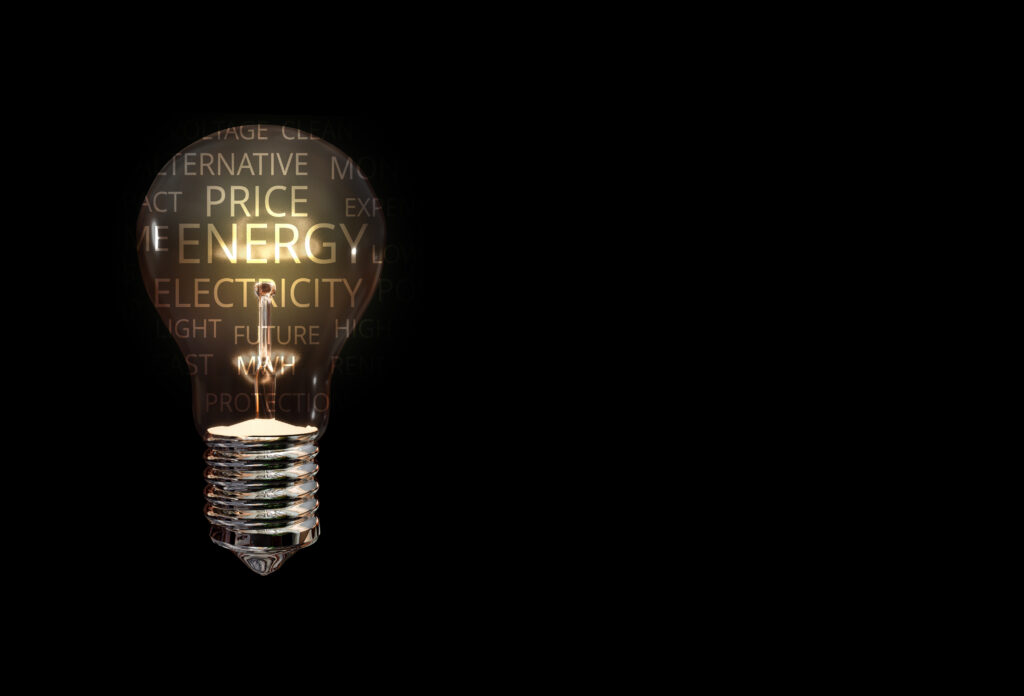
Solar energy is a complex system that uses sophisticated technology to harness the sun’s power. While the science behind solar panels may seem complex, the underlying principle is simple: converting sunlight into electricity. As the world continues to seek sustainable and environmentally friendly energy options, understanding and improving solar energy technology will remain a vital task for scientists and engineers.
How Solar Energy Works
Solar energy is a form of renewable energy that harnesses the power of the sun to generate electricity. This form of energy is becoming increasingly popular due to its limitless nature and environmental advantages. But how exactly does solar energy work? To understand this, we must delve into the mechanics of solar panels, the devices used to convert sunlight into electricity.
The Basics of Solar Panels
Solar panels, also known as photovoltaic (PV) panels, are key to the process of converting sunlight into usable power. These panels are made up of smaller units called solar cells. Each cell is typically made from silicon, a semi-conductive material that also forms an essential part of computer chips.
The Science Behind the Conversion
PV cells have two layers of silicon: an upper layer, known as the N-type, which has been doped with phosphorus to add extra electrons, and a lower layer, known as the P-type, which has been doped with boron to create a deficiency of electrons, or “holes”. When sunlight, in the form of photons, hits the cell, it gives the electrons enough energy to move. The electrons start moving from the N-type layer to the P-type layer.
This motion creates an electric field across the layers that, along with the cell’s conductive properties, causes the electrons to move in a unified direction, creating a current. This current, together with the cell’s voltage (which is a result of the built-in electric field), defines the power (or wattage) that the solar cell can produce.
From DC to AC
The electricity produced by solar panels is in the form of direct current (DC). However, most homes and businesses use alternating current (AC) power. Therefore, the DC electricity from the solar panels goes through an inverter, which transforms it into AC electricity. Modern solar power systems often use microinverters, which are attached to each solar panel, allowing the panels to operate independently and improve the system’s overall efficiency.
Storing Solar Energy
One of the limitations of solar energy is its intermittent nature: it generates power only when the sun is shining. To overcome this, many solar power systems include a battery storage system. The excess power produced during the day charges the battery, which then provides power during the night or on cloudy days.
Connection to the Grid
Many solar power systems are connected to the local electricity grid. When the system generates more power than the property needs, the excess is fed back into the grid. Many jurisdictions have net metering policies, where the utility company pays or gives credit to the system owner for this excess power. Conversely, if the property needs more power than the solar system can provide (for example, at night or during periods of heavy cloud cover), it can draw power from the grid.

Solar energy is a complex system that uses sophisticated technology to harness the sun’s power. While the science behind solar panels may seem complex, the underlying principle is simple: converting sunlight into electricity. As the world continues to seek sustainable and environmentally friendly energy options, understanding and improving solar energy technology will remain a vital task for scientists and engineers.
Choosing a Solar Panel Installer in St. Louis, Missouri 2023: A Comprehensive Guide
The decision to transition to solar energy is a significant step toward reducing your carbon footprint and saving on energy costs. However, this shift entails a complex process that requires a professional solar panel installer. If you live in St. Louis, Missouri, you have several options at your disposal, but choosing the right solar installer can feel overwhelming. This article provides a detailed guide to help you navigate the process and make an informed decision.
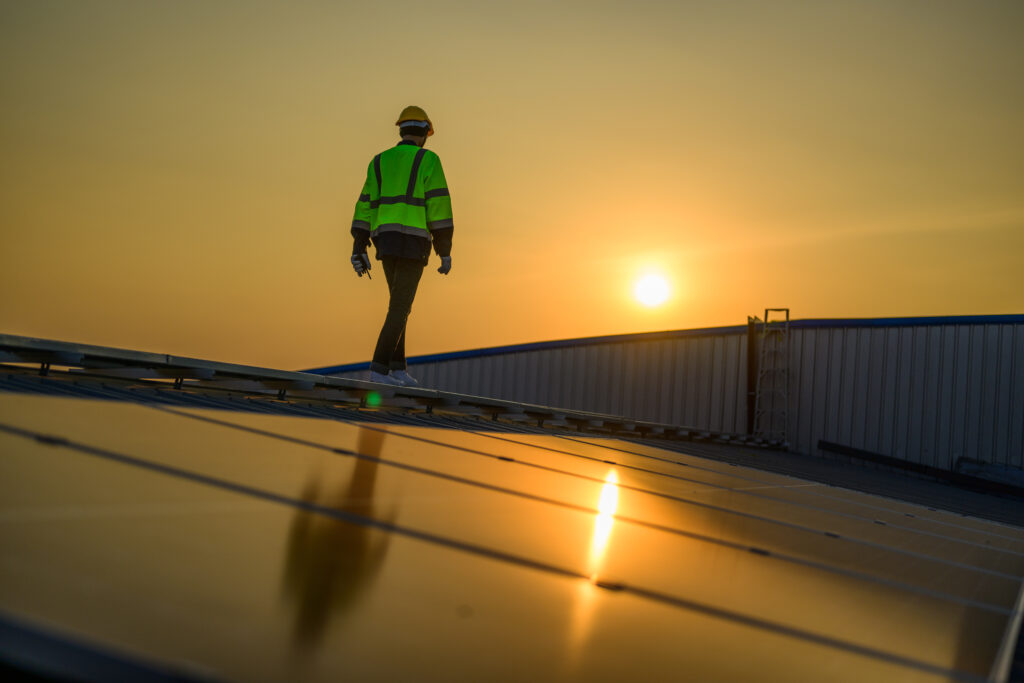
Understanding the Solar Market in St. Louis
Before diving into the process of selecting a solar installer, it’s essential to understand the solar market in St. Louis. Missouri receives an average of 4.7 hours of peak sun per day, making it a viable location for solar energy. The city of St. Louis also offers a sustainable energy program, Green penny which provides financing for renewable energy projects, including solar panel installation.
Research Potential Installers
Start the selection process by researching potential solar installers in St. Louis. Look for companies with a strong presence in the area and positive customer reviews. You can use online search engines, local directories, and social media platforms for this. Additionally, the Solar Energy Industries Association (SEIA) and the North American Board of Certified Energy Practitioners (NABCEP) websites can provide information about certified solar installers in your area.
Evaluate Credentials and Experience
Once you have a list of potential installers, evaluate their credentials and experience. A reputable installer should have necessary certifications from recognized bodies like NABCEP and should be licensed to operate in Missouri. Additionally, check the company’s experience in the solar industry, the number of installations they’ve completed, and if they have experience with both residential and commercial projects.
Examine Their Solar Equipment Options
Different homes have unique solar energy needs, and the solar installer you choose should be able to cater to these needs. Ask about the kinds of solar panels and inverters they offer. Top-quality brands include Silfab, Panasonic, Solaria, SolarEdge, and Enphase. The installer should be able to explain the advantages and disadvantages of each option and help you select the equipment that suits your needs and budget.
Customer Service and Communication
The installer’s customer service and communication skills are crucial. They should be able to answer your questions confidently and explain the installation process in clear, understandable terms. Additionally, they should keep you informed about the progress of the project and be responsive to your calls and emails. Reading customer reviews and testimonials can give you insights into the installer’s customer service quality.
Get Multiple Quotes
After narrowing down your options, get quotes from at least three installers. The quotes should include the cost of equipment, installation, permits, and any additional services such as site assessment and system design. Compare these quotes, but don’t automatically go for the cheapest option. The quality of service and equipment is just as important as the price.
Consider Financing Options
Solar panel installation can be a significant investment, and the installer you choose should offer various financing options. These could include solar leases, power purchase agreements, solar loans, or assistance with securing federal solar tax credits and local incentives. An installer with tailored financing options can help make the switch to solar energy more affordable.
Review the Warranty
A good solar installation company should offer a warranty for their work. This could cover the panels, inverters, and the installation work itself.
Choosing a Solar Panel Installer in St. Louis, Missouri 2023: A Comprehensive Guide
The decision to transition to solar energy is a significant step toward reducing your carbon footprint and saving on energy costs. However, this shift entails a complex process that requires a professional solar panel installer. If you live in St. Louis, Missouri, you have several options at your disposal, but choosing the right solar installer can feel overwhelming. This article provides a detailed guide to help you navigate the process and make an informed decision.

Understanding the Solar Market in St. Louis
Before diving into the process of selecting a solar installer, it’s essential to understand the solar market in St. Louis. Missouri receives an average of 4.7 hours of peak sun per day, making it a viable location for solar energy. The city of St. Louis also offers a sustainable energy program, Green penny which provides financing for renewable energy projects, including solar panel installation.
Research Potential Installers
Start the selection process by researching potential solar installers in St. Louis. Look for companies with a strong presence in the area and positive customer reviews. You can use online search engines, local directories, and social media platforms for this. Additionally, the Solar Energy Industries Association (SEIA) and the North American Board of Certified Energy Practitioners (NABCEP) websites can provide information about certified solar installers in your area.
Evaluate Credentials and Experience
Once you have a list of potential installers, evaluate their credentials and experience. A reputable installer should have necessary certifications from recognized bodies like NABCEP and should be licensed to operate in Missouri. Additionally, check the company’s experience in the solar industry, the number of installations they’ve completed, and if they have experience with both residential and commercial projects.
Examine Their Solar Equipment Options
Different homes have unique solar energy needs, and the solar installer you choose should be able to cater to these needs. Ask about the kinds of solar panels and inverters they offer. Top-quality brands include Silfab, Panasonic, Solaria, SolarEdge, and Enphase. The installer should be able to explain the advantages and disadvantages of each option and help you select the equipment that suits your needs and budget.
Customer Service and Communication
The installer’s customer service and communication skills are crucial. They should be able to answer your questions confidently and explain the installation process in clear, understandable terms. Additionally, they should keep you informed about the progress of the project and be responsive to your calls and emails. Reading customer reviews and testimonials can give you insights into the installer’s customer service quality.
Get Multiple Quotes
After narrowing down your options, get quotes from at least three installers. The quotes should include the cost of equipment, installation, permits, and any additional services such as site assessment and system design. Compare these quotes, but don’t automatically go for the cheapest option. The quality of service and equipment is just as important as the price.
Consider Financing Options
Solar panel installation can be a significant investment, and the installer you choose should offer various financing options. These could include solar leases, power purchase agreements, solar loans, or assistance with securing federal solar tax credits and local incentives. An installer with tailored financing options can help make the switch to solar energy more affordable.
Review the Warranty
A good solar installation company should offer a warranty for their work. This could cover the panels, inverters, and the installation work itself.
Exploring the Rural Energy for America Program: Renewable Energy Systems & Energy Efficiency Improvement
The Rural Energy for America Program (REAP) plays a crucial role in promoting renewable energy systems and energy efficiency improvements in agricultural production and rural small businesses. By providing guaranteed loan financing and grant funding, REAP aims to increase American energy independence, reduce energy costs, and contribute to a greener and more sustainable future.
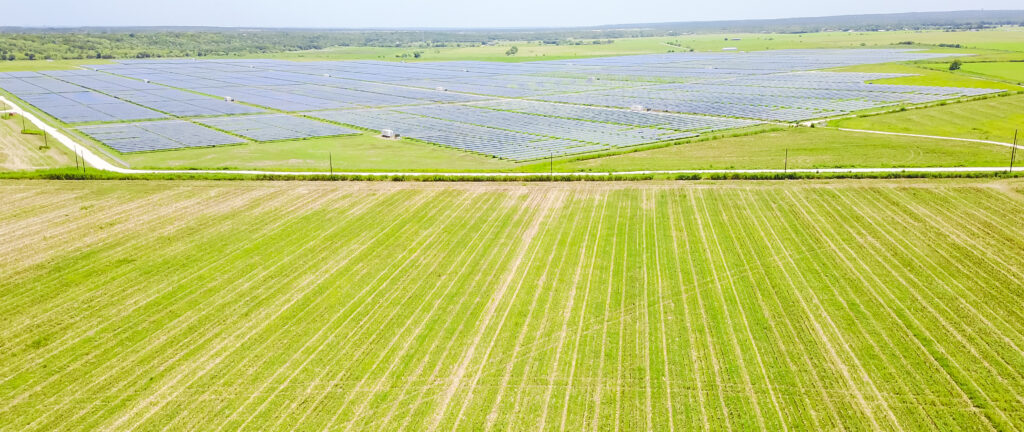
REAP Program overview:
REAP offers financial support to agricultural producers and rural small businesses for the implementation of renewable energy systems or energy efficiency upgrades. This encompasses a wide range of solutions, such as biomass, geothermal, hydropower, hydrogen, wind, solar, and more. Funding can also be utilized for the purchase and installation of energy-efficient equipment and systems that improve agricultural production and processing.
Eligibility:
The program is open to agricultural producers who derive at least 50% of their gross income from agricultural operations and small businesses located in eligible rural areas. Small businesses must meet the Small Business Administration size standards as per 13 CFR 121. It is important to note that applicants must have no outstanding delinquent federal taxes, debt, judgments, or debarment.
Loan Guarantees and Grants:
REAP offers loan guarantees covering up to 75% of total eligible project costs, with the loan term not exceeding 40 years. Additionally, grants are available for up to 50% of total eligible project costs. Applicants must provide matching funds for grant applications, and the federal share is limited to 25-50%, depending on the project type. The maximum loan guarantee percentage is determined annually.
Usage of Funds:
Funds obtained through REAP can be utilized for various purposes. Renewable energy systems, including biomass, geothermal, hydropower, wind, solar, and others, can be purchased and installed. Additionally, energy efficiency improvements such as high-efficiency HVAC systems, insulation, lighting, cooling or refrigeration units, and more are eligible. Agricultural producers can also use guaranteed loan funds for energy-efficient equipment and systems for agricultural production and processing.
Application Process and Contacts:
Applications for REAP can be submitted year-round at your local Rural Development office. To get started, it is beneficial to contact your State Rural Development Energy Coordinator, who can provide guidance and assistance throughout the application process. They will also be able to address specific questions related to the program.
The Rural Energy for America Program (REAP) is an essential initiative that supports the adoption of renewable energy systems and energy efficiency improvements in rural America. Through a combination of loan guarantees and grants, agricultural producers and small businesses can access funding to implement sustainable and energy-saving solutions. By leveraging these resources, REAP contributes to energy independence, cost reduction, and a greener future for rural communities.
Exploring the Rural Energy for America Program: Renewable Energy Systems & Energy Efficiency Improvement
The Rural Energy for America Program (REAP) plays a crucial role in promoting renewable energy systems and energy efficiency improvements in agricultural production and rural small businesses. By providing guaranteed loan financing and grant funding, REAP aims to increase American energy independence, reduce energy costs, and contribute to a greener and more sustainable future.

REAP Program overview:
REAP offers financial support to agricultural producers and rural small businesses for the implementation of renewable energy systems or energy efficiency upgrades. This encompasses a wide range of solutions, such as biomass, geothermal, hydropower, hydrogen, wind, solar, and more. Funding can also be utilized for the purchase and installation of energy-efficient equipment and systems that improve agricultural production and processing.
Eligibility:
The program is open to agricultural producers who derive at least 50% of their gross income from agricultural operations and small businesses located in eligible rural areas. Small businesses must meet the Small Business Administration size standards as per 13 CFR 121. It is important to note that applicants must have no outstanding delinquent federal taxes, debt, judgments, or debarment.
Loan Guarantees and Grants:
REAP offers loan guarantees covering up to 75% of total eligible project costs, with the loan term not exceeding 40 years. Additionally, grants are available for up to 50% of total eligible project costs. Applicants must provide matching funds for grant applications, and the federal share is limited to 25-50%, depending on the project type. The maximum loan guarantee percentage is determined annually.
Usage of Funds:
Funds obtained through REAP can be utilized for various purposes. Renewable energy systems, including biomass, geothermal, hydropower, wind, solar, and others, can be purchased and installed. Additionally, energy efficiency improvements such as high-efficiency HVAC systems, insulation, lighting, cooling or refrigeration units, and more are eligible. Agricultural producers can also use guaranteed loan funds for energy-efficient equipment and systems for agricultural production and processing.
Application Process and Contacts:
Applications for REAP can be submitted year-round at your local Rural Development office. To get started, it is beneficial to contact your State Rural Development Energy Coordinator, who can provide guidance and assistance throughout the application process. They will also be able to address specific questions related to the program.
The Rural Energy for America Program (REAP) is an essential initiative that supports the adoption of renewable energy systems and energy efficiency improvements in rural America. Through a combination of loan guarantees and grants, agricultural producers and small businesses can access funding to implement sustainable and energy-saving solutions. By leveraging these resources, REAP contributes to energy independence, cost reduction, and a greener future for rural communities.
How Joe Saves $3600 a Year by Switching to Solar Energy
In an era where sustainability is at the forefront of global discourse, individuals worldwide are seeking ways to contribute to the green revolution. One such individual is Joe, a homeowner who has managed to save a staggering $3600 a year on electricity bills by switching to solar energy. This article explores how Joe accomplished this impressive feat and the potential implications for homeowners aiming to follow suit.

The catalyst for Joe’s transition to solar energy was twofold:
A desire to reduce his carbon footprint and the potential for significant savings on his annual electricity bill. By installing solar panels on his rooftop, Joe was able to tap into the abundant and renewable energy the sun provides, thus minimizing his reliance on traditional electricity sources.
The cost of solar panels has significantly reduced in recent years, making them a feasible option for many homeowners. Joe worked with a local solar company to install a system that met his household’s energy needs. The initial cost was substantial, but the potential for savings and the long-term benefits of sustainable energy made it a worthwhile investment.

In his locality, the average cost of electricity is about $0.13 per kilowatt-hour (kWh). Joe’s household, on average, consumed about 900 kWh per month, which resulted in a monthly bill of $117 or about $1400 annually. By switching to solar, his energy expenditure plummeted to almost zero, barring a few cloudy days when the system couldn’t produce enough power.
However, the savings didn’t stop there. Joe also took advantage of net metering, a system where excess energy produced by his solar panels is sent back to the grid. His power company then credits him for this energy, which further reduces his electricity bill. During the sunnier months, his solar panels produced more power than his home needed, leading to significant credits on his account.
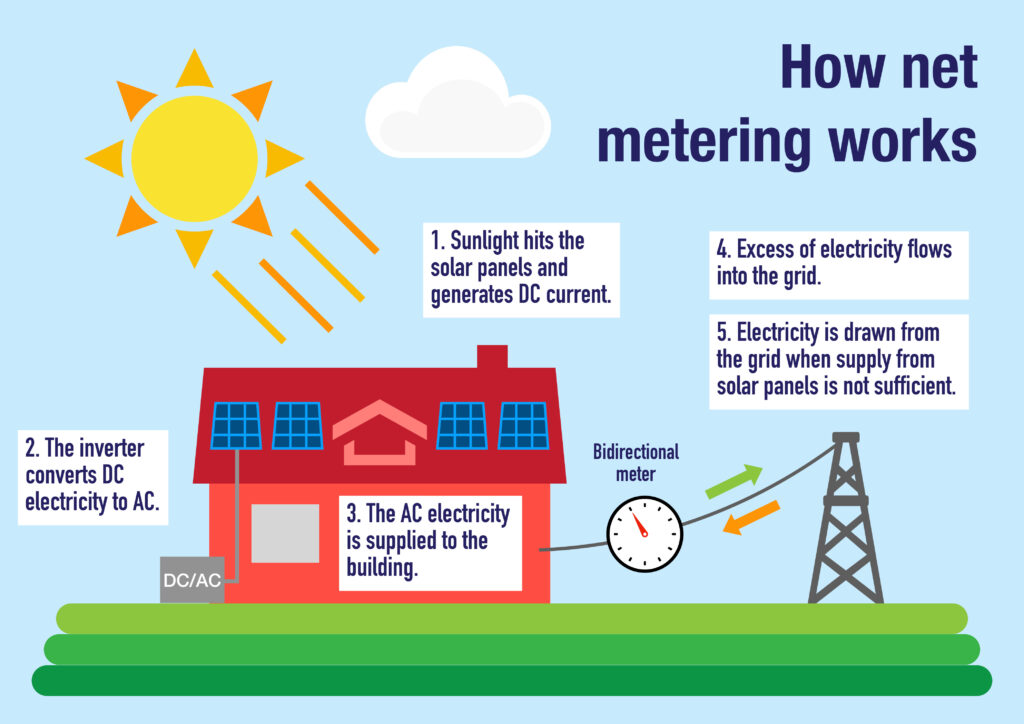
On top of this, Joe was able to benefit from federal tax incentives for solar energy. The Federal Investment Tax Credit (ITC) gives homeowners a reduction in their federal taxes equal to a percentage of the cost of their solar system. At the time of Joe’s installation, the ITC was 30%, which significantly offset the initial cost of his system.
In total, Joe saved around $3600 annually on his electricity bills by switching to solar. This figure includes the money he no longer spends on traditional electricity, the credits he receives through net metering, and the tax savings from the ITC.
It’s worth noting that the amount of savings will depend on several factors, including local electricity rates, the size and efficiency of the solar system, the amount of sunlight the area receives, and the local policies regarding solar energy. However, Joe’s case provides a promising glimpse into the potential for solar energy to reduce electricity costs and promote sustainability.
Joe’s journey to solar energy savings is a testament to the numerous benefits of this renewable source. As more people follow in his footsteps, we can expect a greener and more sustainable future, not to mention significant savings on energy bills. For those interested in going solar, it’s crucial to research local solar providers, understand the potential costs and savings, and take advantage of any available incentives. Like Joe, you too could be saving $3600 a year by making the switch to solar.
How Joe Saves $3600 a Year by Switching to Solar Energy
In an era where sustainability is at the forefront of global discourse, individuals worldwide are seeking ways to contribute to the green revolution. One such individual is Joe, a homeowner who has managed to save a staggering $3600 a year on electricity bills by switching to solar energy. This article explores how Joe accomplished this impressive feat and the potential implications for homeowners aiming to follow suit.

The catalyst for Joe’s transition to solar energy was twofold:
A desire to reduce his carbon footprint and the potential for significant savings on his annual electricity bill. By installing solar panels on his rooftop, Joe was able to tap into the abundant and renewable energy the sun provides, thus minimizing his reliance on traditional electricity sources.
The cost of solar panels has significantly reduced in recent years, making them a feasible option for many homeowners. Joe worked with a local solar company to install a system that met his household’s energy needs. The initial cost was substantial, but the potential for savings and the long-term benefits of sustainable energy made it a worthwhile investment.

In his locality, the average cost of electricity is about $0.13 per kilowatt-hour (kWh). Joe’s household, on average, consumed about 900 kWh per month, which resulted in a monthly bill of $117 or about $1400 annually. By switching to solar, his energy expenditure plummeted to almost zero, barring a few cloudy days when the system couldn’t produce enough power.
However, the savings didn’t stop there. Joe also took advantage of net metering, a system where excess energy produced by his solar panels is sent back to the grid. His power company then credits him for this energy, which further reduces his electricity bill. During the sunnier months, his solar panels produced more power than his home needed, leading to significant credits on his account.

On top of this, Joe was able to benefit from federal tax incentives for solar energy. The Federal Investment Tax Credit (ITC) gives homeowners a reduction in their federal taxes equal to a percentage of the cost of their solar system. At the time of Joe’s installation, the ITC was 30%, which significantly offset the initial cost of his system.
In total, Joe saved around $3600 annually on his electricity bills by switching to solar. This figure includes the money he no longer spends on traditional electricity, the credits he receives through net metering, and the tax savings from the ITC.
It’s worth noting that the amount of savings will depend on several factors, including local electricity rates, the size and efficiency of the solar system, the amount of sunlight the area receives, and the local policies regarding solar energy. However, Joe’s case provides a promising glimpse into the potential for solar energy to reduce electricity costs and promote sustainability.
Joe’s journey to solar energy savings is a testament to the numerous benefits of this renewable source. As more people follow in his footsteps, we can expect a greener and more sustainable future, not to mention significant savings on energy bills. For those interested in going solar, it’s crucial to research local solar providers, understand the potential costs and savings, and take advantage of any available incentives. Like Joe, you too could be saving $3600 a year by making the switch to solar.
Sun-soaked St. Louis is a Perfect Location for a Solar Installation
St. Louis is a great city for a solar installation. The city gets a lot of sun and has a lot of space for solar panels. The city also has a lot of incentives for solar installations.
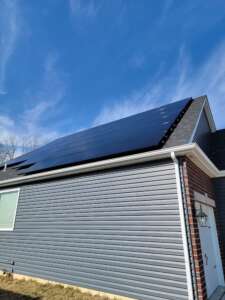
Introduction
The city of St. Louis is a prime location for solar installations, thanks to its sunny climate and abundance of roof space. With solar panels installed on roofs throughout the city, residents and businesses can benefit from clean energy and reduced emissions.
There are a number of solar installers in the St. Louis area, so residents can find a provider that meets their needs. Some installers offer comprehensive services, while others focus on specific types of solar panels or installations. Regardless of the provider, all solar installations in St. Louis require permits from the city government.
Residents can learn more about solar installations and find qualified providers by visiting the city’s website or contacting the Department of Public Works.

Why St. Louis Is a Great Place for Solar
In the wake of a historic drought and the unfortunate loss of jobs in traditional manufacturing sectors, many people have turned to solar energy as a viable option for improving their energy efficiency. Solar photovoltaic installations are now being installed all over the United States, but Missouri may be an especially prime location for such installations because of its sunny climate and extensive available land. Solar installation consultants in St. Louis can help assess your home or business potential for solar power, provide estimates for system size and price, and recommend appropriate financing options.
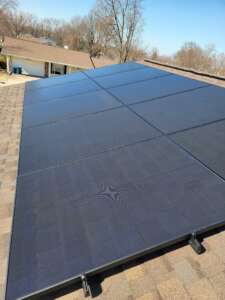
The Benefits of Solar Energy
Solar energy is one of the most environmentally friendly forms of energy. It doesn’t produce any emissions, and it’s a renewable resource. Solar energy is also affordable, and it’s becoming more and more popular as a source of energy.
One of the biggest benefits of solar energy is that it’s reliable. Solar panels produce electricity all day, every day, regardless of the weather. This means that solar energy is a great choice for households and businesses that need reliable power.
Another big benefit of solar energy is that it’s sustainable. Solar panels don’t require any fuel or maintenance, which means they can last for many years. This means that solar energy can help reduce the amount of pollution that’s produced by traditional sources of energy.
Solar energy is also environmentally friendly. Solar panels use very little energy, which means they have a minimal impact on the environment. In fact, solar panels can actually help reduce the amount of pollution that’s produced by traditional sources of energy.
How Solar Energy Can Help Save the Environment
In recent years, solar energy has become a more and more popular option for homes and businesses. Solar panels provide an earth-friendly way to generate power, as well as helping to reduce greenhouse gas emissions. Here are some of the benefits of solar energy:
Solar energy is environmentally friendly – Solar panels use sunlight to generate electricity, which means that it doesn’t produce any harmful emissions. In fact, solar energy is one of the most environmentally friendly sources of power available.
Solar energy is affordable – Solar panels are relatively affordable, so you can save money on your power bill by installing them yourself or using a third-party installer. In addition, tax credits and other incentives exist to make solar installation even more cost-effective.
Solar energy is reliable – Unlike some other forms of renewable energy (such as wind), solar panels are always generating electricity regardless of weather conditions. This makes solar Energy a reliable option for powering critical devices in your home or office.
How Solar Energy Can Help You Save Money
If you’re interested in saving money on your energy bills, then a solar installation may be the perfect solution for you. Not only will solar panels help reduce your energy consumption, but they can also save you money on your monthly utility bill. Plus, many St. Louis solar installers offer a variety of financing options to make the process as flexible and affordable as possible for you!
How to Get Started with Solar in St. Louis
Homeowners and businesses who are interested in installing solar panels can find many experienced installers in the St. Louis area. Once an installation is underway, there are a few things homeowners should keep in mind to ensure a smooth process and optimal energy savings.
One thing to consider when deciding whether or not to go solar is your home’s roof type. Flat roofs, for example, can’t typically accommodate the large mounting structures common in rooftop solar installations. Commercial buildings may be better suited for solar than homes due to a larger space for the panels, but this factor must also be considered along with other factors specific to that building such as its orientation and year of construction.[1]
Some key considerations when looking into getting solar installed include:
- Analyze your current energy usage. Solar panels function as a battery to store solar energy for later use. Knowing how much power you currently consume is the first step in knowing if solar is right for you and your home.
- Figure out what kind of solar system is right for you. There are three main types of solar systems: standalone, mini arrays and grid parity. Standalone systems are installed on or near the property line, mini arrays are smaller than typical rooftop installations and can be placed anywhere on the roof, while grid parity systems allow homeowners to sell electricity back to their utility company instead of using batteries.[2]
- Get quotes from more than one installer. A single quote may be too low or too high for your specific needs, so it’s important to get quotes from more than one installer. This will help you find the best deal and ensure that the system is installed properly.[3]
- Talk to your neighbors. If you’re considering solar, it’s important to talk to your neighbors first. They may have good or bad experiences with solar installations in the past, and it’s important to get their opinions before making a decision.
- Get a permit. Solar panels require a permit from your municipality, so it’s important to check with your local government before starting any installation work.
- Get insurance. Solar panels are expensive, and if something goes wrong during the installation process, you may be liable for damages. Make sure you have the appropriate insurance in place.[4]
- Get a permit from your municipality, so solar panels require a permit from your local government.
Solar Incentives in St. Louis
If you’re looking to take the plunge into solar energy, St. Louis may be a great place to start. Sun-soaked St. Louis is a perfect location for a solar installation, thanks to generous incentives offered by the city and state governments.
But before you install anything, it’s important to understand your options and choose the best system for your needs. There are three main types of solar panels: standalone (or “grid-tied”), hybrid, and off-grid PV systems. Standalone systems use power generated from the sun to operate their own inverters and batteries, while grid-tied systems send excess power back onto the local electricity grid – these are typically used by larger businesses or homes that don’t need to produce their own power. Hybrid systems use both standalone and grid-tied panels, and off-grid PV systems use solar panels to power a small battery or generator to keep the system running during outages.
There are a number of factors to consider when choosing a solar system, including your budget, your needs, and your location. For example, if you live in an area with strong sunlight, a standalone system may be the best option for you. If you’re looking to save money on your energy bill, a hybrid system may be the best option for you – it combines the benefits of both standalone and grid-tied systems. And if you’re looking to go off-grid, an off-grid PV system may be the best option for you.
Regardless of your system choice, be sure to consult with a solar installer in the St. Louis area to get started – they have extensive knowledge and can help guide you through the process. And don’t forget: if you follow these five tips for enjoying solar energy, you’re guaranteed to save money on your energy bill!
Solar Rebates in St. Louis
If you’re interested in solar energy, there are a few things you should know before you start shopping. First, solar installations in St. Louis are a great option for those who want to save money on their energy bills. Second, solar rebates in St. Louis can help you get started with your solar installation. Third, there are many different types of solar installations available in St. Louis, so be sure to research which one is right for you. Finally, if you have any questions about solar energy or how to get started with it in St. Louis, don’t hesitate to contact a local installer or solar company.
Solar Installers in St. Louis
If you’re interested in installing solar energy in your home or business, there are a few things you’ll need to do first. First, find a reputable installer who can help you get started. Second, research your options and choose the best system for your needs. And finally, make sure you have all the necessary permits and paperwork in order to go ahead with the installation.
If you’re looking for a solar installer in St. Louis, you’ll be happy to know that there are plenty of talented professionals available. Some of the best solar installers in the city include Sunnova Energy, Greenlight Solar, and SolarCity. These companies have years of experience installing solar systems and will be able to help you choose the best option for your specific needs.
If you’re ready to take the plunge and install solar energy in your home or business, be sure to talk to a reputable installer like these before starting any work. They can help you make the most informed decisions and get your installation underway quickly and hassle-free.
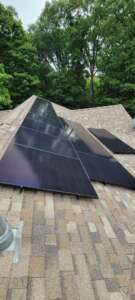
Conclusion
After examining the data, it is safe to say St. Louis is a great location for solar installations. In addition to its sunny days and warm weather year-round, the city has a wealth of skilled installers and an abundance of potential customers. Although there may be some initial out-of-pocket costs associated with installing solar panels, the benefits – including lower energy bills and reduced carbon emissions – are well worth it. Whether you’re looking to save money on your monthly electricity bill or reduce your environmental impact, St. Louis should definitely be on your list of prospective cities for a solar installation.
St. Louis is a great city for solar energy, and there are many benefits to installing solar panels on your home or business. Solar energy is good for the environment and can help you save money on your electric bills. If you’re interested in getting started with solar in St. Louis, there are many qualified solar installers in the area who can help you choose the right system for your needs.
Sun-soaked St. Louis is a Perfect Location for a Solar Installation
St. Louis is a great city for a solar installation. The city gets a lot of sun and has a lot of space for solar panels. The city also has a lot of incentives for solar installations.

Introduction
The city of St. Louis is a prime location for solar installations, thanks to its sunny climate and abundance of roof space. With solar panels installed on roofs throughout the city, residents and businesses can benefit from clean energy and reduced emissions.
There are a number of solar installers in the St. Louis area, so residents can find a provider that meets their needs. Some installers offer comprehensive services, while others focus on specific types of solar panels or installations. Regardless of the provider, all solar installations in St. Louis require permits from the city government.
Residents can learn more about solar installations and find qualified providers by visiting the city’s website or contacting the Department of Public Works.

Why St. Louis Is a Great Place for Solar
In the wake of a historic drought and the unfortunate loss of jobs in traditional manufacturing sectors, many people have turned to solar energy as a viable option for improving their energy efficiency. Solar photovoltaic installations are now being installed all over the United States, but Missouri may be an especially prime location for such installations because of its sunny climate and extensive available land. Solar installation consultants in St. Louis can help assess your home or business potential for solar power, provide estimates for system size and price, and recommend appropriate financing options.

The Benefits of Solar Energy
Solar energy is one of the most environmentally friendly forms of energy. It doesn’t produce any emissions, and it’s a renewable resource. Solar energy is also affordable, and it’s becoming more and more popular as a source of energy.
One of the biggest benefits of solar energy is that it’s reliable. Solar panels produce electricity all day, every day, regardless of the weather. This means that solar energy is a great choice for households and businesses that need reliable power.
Another big benefit of solar energy is that it’s sustainable. Solar panels don’t require any fuel or maintenance, which means they can last for many years. This means that solar energy can help reduce the amount of pollution that’s produced by traditional sources of energy.
Solar energy is also environmentally friendly. Solar panels use very little energy, which means they have a minimal impact on the environment. In fact, solar panels can actually help reduce the amount of pollution that’s produced by traditional sources of energy.
How Solar Energy Can Help Save the Environment
In recent years, solar energy has become a more and more popular option for homes and businesses. Solar panels provide an earth-friendly way to generate power, as well as helping to reduce greenhouse gas emissions. Here are some of the benefits of solar energy:
Solar energy is environmentally friendly – Solar panels use sunlight to generate electricity, which means that it doesn’t produce any harmful emissions. In fact, solar energy is one of the most environmentally friendly sources of power available.
Solar energy is affordable – Solar panels are relatively affordable, so you can save money on your power bill by installing them yourself or using a third-party installer. In addition, tax credits and other incentives exist to make solar installation even more cost-effective.
Solar energy is reliable – Unlike some other forms of renewable energy (such as wind), solar panels are always generating electricity regardless of weather conditions. This makes solar Energy a reliable option for powering critical devices in your home or office.
How Solar Energy Can Help You Save Money
If you’re interested in saving money on your energy bills, then a solar installation may be the perfect solution for you. Not only will solar panels help reduce your energy consumption, but they can also save you money on your monthly utility bill. Plus, many St. Louis solar installers offer a variety of financing options to make the process as flexible and affordable as possible for you!
How to Get Started with Solar in St. Louis
Homeowners and businesses who are interested in installing solar panels can find many experienced installers in the St. Louis area. Once an installation is underway, there are a few things homeowners should keep in mind to ensure a smooth process and optimal energy savings.
One thing to consider when deciding whether or not to go solar is your home’s roof type. Flat roofs, for example, can’t typically accommodate the large mounting structures common in rooftop solar installations. Commercial buildings may be better suited for solar than homes due to a larger space for the panels, but this factor must also be considered along with other factors specific to that building such as its orientation and year of construction.[1]
Some key considerations when looking into getting solar installed include:
- Analyze your current energy usage. Solar panels function as a battery to store solar energy for later use. Knowing how much power you currently consume is the first step in knowing if solar is right for you and your home.
- Figure out what kind of solar system is right for you. There are three main types of solar systems: standalone, mini arrays and grid parity. Standalone systems are installed on or near the property line, mini arrays are smaller than typical rooftop installations and can be placed anywhere on the roof, while grid parity systems allow homeowners to sell electricity back to their utility company instead of using batteries.[2]
- Get quotes from more than one installer. A single quote may be too low or too high for your specific needs, so it’s important to get quotes from more than one installer. This will help you find the best deal and ensure that the system is installed properly.[3]
- Talk to your neighbors. If you’re considering solar, it’s important to talk to your neighbors first. They may have good or bad experiences with solar installations in the past, and it’s important to get their opinions before making a decision.
- Get a permit. Solar panels require a permit from your municipality, so it’s important to check with your local government before starting any installation work.
- Get insurance. Solar panels are expensive, and if something goes wrong during the installation process, you may be liable for damages. Make sure you have the appropriate insurance in place.[4]
- Get a permit from your municipality, so solar panels require a permit from your local government.
Solar Incentives in St. Louis
If you’re looking to take the plunge into solar energy, St. Louis may be a great place to start. Sun-soaked St. Louis is a perfect location for a solar installation, thanks to generous incentives offered by the city and state governments.
But before you install anything, it’s important to understand your options and choose the best system for your needs. There are three main types of solar panels: standalone (or “grid-tied”), hybrid, and off-grid PV systems. Standalone systems use power generated from the sun to operate their own inverters and batteries, while grid-tied systems send excess power back onto the local electricity grid – these are typically used by larger businesses or homes that don’t need to produce their own power. Hybrid systems use both standalone and grid-tied panels, and off-grid PV systems use solar panels to power a small battery or generator to keep the system running during outages.
There are a number of factors to consider when choosing a solar system, including your budget, your needs, and your location. For example, if you live in an area with strong sunlight, a standalone system may be the best option for you. If you’re looking to save money on your energy bill, a hybrid system may be the best option for you – it combines the benefits of both standalone and grid-tied systems. And if you’re looking to go off-grid, an off-grid PV system may be the best option for you.
Regardless of your system choice, be sure to consult with a solar installer in the St. Louis area to get started – they have extensive knowledge and can help guide you through the process. And don’t forget: if you follow these five tips for enjoying solar energy, you’re guaranteed to save money on your energy bill!
Solar Rebates in St. Louis
If you’re interested in solar energy, there are a few things you should know before you start shopping. First, solar installations in St. Louis are a great option for those who want to save money on their energy bills. Second, solar rebates in St. Louis can help you get started with your solar installation. Third, there are many different types of solar installations available in St. Louis, so be sure to research which one is right for you. Finally, if you have any questions about solar energy or how to get started with it in St. Louis, don’t hesitate to contact a local installer or solar company.
Solar Installers in St. Louis
If you’re interested in installing solar energy in your home or business, there are a few things you’ll need to do first. First, find a reputable installer who can help you get started. Second, research your options and choose the best system for your needs. And finally, make sure you have all the necessary permits and paperwork in order to go ahead with the installation.
If you’re looking for a solar installer in St. Louis, you’ll be happy to know that there are plenty of talented professionals available. Some of the best solar installers in the city include Sunnova Energy, Greenlight Solar, and SolarCity. These companies have years of experience installing solar systems and will be able to help you choose the best option for your specific needs.
If you’re ready to take the plunge and install solar energy in your home or business, be sure to talk to a reputable installer like these before starting any work. They can help you make the most informed decisions and get your installation underway quickly and hassle-free.

Conclusion
After examining the data, it is safe to say St. Louis is a great location for solar installations. In addition to its sunny days and warm weather year-round, the city has a wealth of skilled installers and an abundance of potential customers. Although there may be some initial out-of-pocket costs associated with installing solar panels, the benefits – including lower energy bills and reduced carbon emissions – are well worth it. Whether you’re looking to save money on your monthly electricity bill or reduce your environmental impact, St. Louis should definitely be on your list of prospective cities for a solar installation.
St. Louis is a great city for solar energy, and there are many benefits to installing solar panels on your home or business. Solar energy is good for the environment and can help you save money on your electric bills. If you’re interested in getting started with solar in St. Louis, there are many qualified solar installers in the area who can help you choose the right system for your needs.


